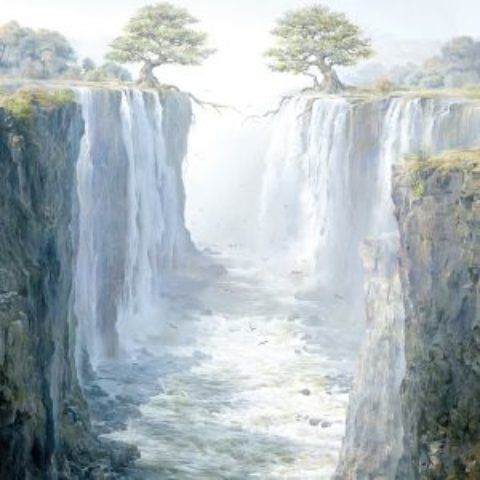“I AM and the Mystery of Love, John 8” (4/9/2019)
Fr. Ignatius John Schweitzer, OP
In our Gospel today, the Pharisees, in their debate with Jesus, ask him the crucial question: “Who are you?” Throughout the Gospel of John, Jesus answers that question in many different ways. Today we can discern a rather profound, and even metaphysical, depth to his answer. Jesus is the God who is self-giving Love, and this will be manifested on the Cross. When Jesus calls himself “I AM,” he is claiming for himself the name of God that was revealed to Moses in the Burning Bush. This mysterious God, I AM WHO AM, who accompanied Israel, is the same God who will be manifested in the self-giving love of the Cross.
So let’s see how Jesus expresses this in our Gospel. He speaks of the Son of Man being lifted up. This is the second time he does so in the Gospel of John. The first was with Nicodemus in chapter 3. There Jesus says the Son of Man must be lifted up, so that those who believe in him may have eternal life (3:15). There Jesus reveals the mystery of the Cross as salvation. And in our Gospel today, the Son of Man being lifted up focuses on the mystery of the Cross as the self-revelation of God himself. In John 3, the Cross as the mystery of salvation, and here in John 8, the Cross as the mystery of God’s self-revelation: who God is in himself. So what does God reveal about himself on the Cross?
Jesus says, “what I heard from [the Father] I tell the world…When you lift up the Son of Man, then you will realize that I AM, and that I do nothing on my own, but I say only what the Father taught me.”
So, when Jesus is lifted up on the Cross, he will be doing precisely what he sees the Father doing: giving all in love. What Jesus hears from the Father, what he sees in the Father, Jesus reveals to us through his words but also through his deeds. Jesus’ deeds are also his teaching. From all eternity, the Father has been giving all to the Son, in begetting him and giving him the divine nature. On the Cross, where we see the Son giving all in love, we see a perfect revelation of the Father. On the Cross, we see God manifested as self-giving love. As Jesus says, “When you lift up the Son of Man, then you will realize that I AM, and that I do nothing on my own, but I say only what the Father taught me.”
What Jesus says and does he learned from the Father. And from Jesus we learn that God is self-giving love: The Father begetting the Son and giving him everything in love. And the Father and Son co-sourcing the Holy Spirit, and giving him everything in love. God as “I AM” is a communion of Love.
“I AM WHO AM.” This name of God has been reflected on by many of the doctors of the Church. St Gregory of Nazianzus captures well the basic idea in a short phrase, God as “a kind of boundless and limitless sea of being” (Oration 38.7). Aquinas’ phrase says the same thing and is just as charming “ipsum esse subsistens,” the act of existence itself subsisting, unbounded by essence—pure unbounded Being. But we’ll stick with Gregory of Nazianzus. God as a limitless and boundless ocean of being, a limitless and boundless ocean of perfection—infinite goodness, beauty, truth, wisdom, justice, holiness, and so forth. And on the Cross, Jesus, the I AM, shines forth as the limitless and boundless ocean of being which is also the limitless and boundless ocean of love. Love is at the heart of being.
If we wanted to capture in a picture or in an image ipsum esse substistens or a boundless and limitless ocean of being, we could hardly do better than the image of the Cross. The outstretched arms pointing out into infinity. The outstretched legs and head pointing out into infinity. The God who is love stretched out on the wood of the Cross and extending in all directions, in his total self-giving love. He gives all in love, boundlessly and limitlessly. Jesus says, “When you lift up the Son of Man, then you will realize that I AM.”
And each time we look at the Cross, we also realize what we are to share in and imitate.
